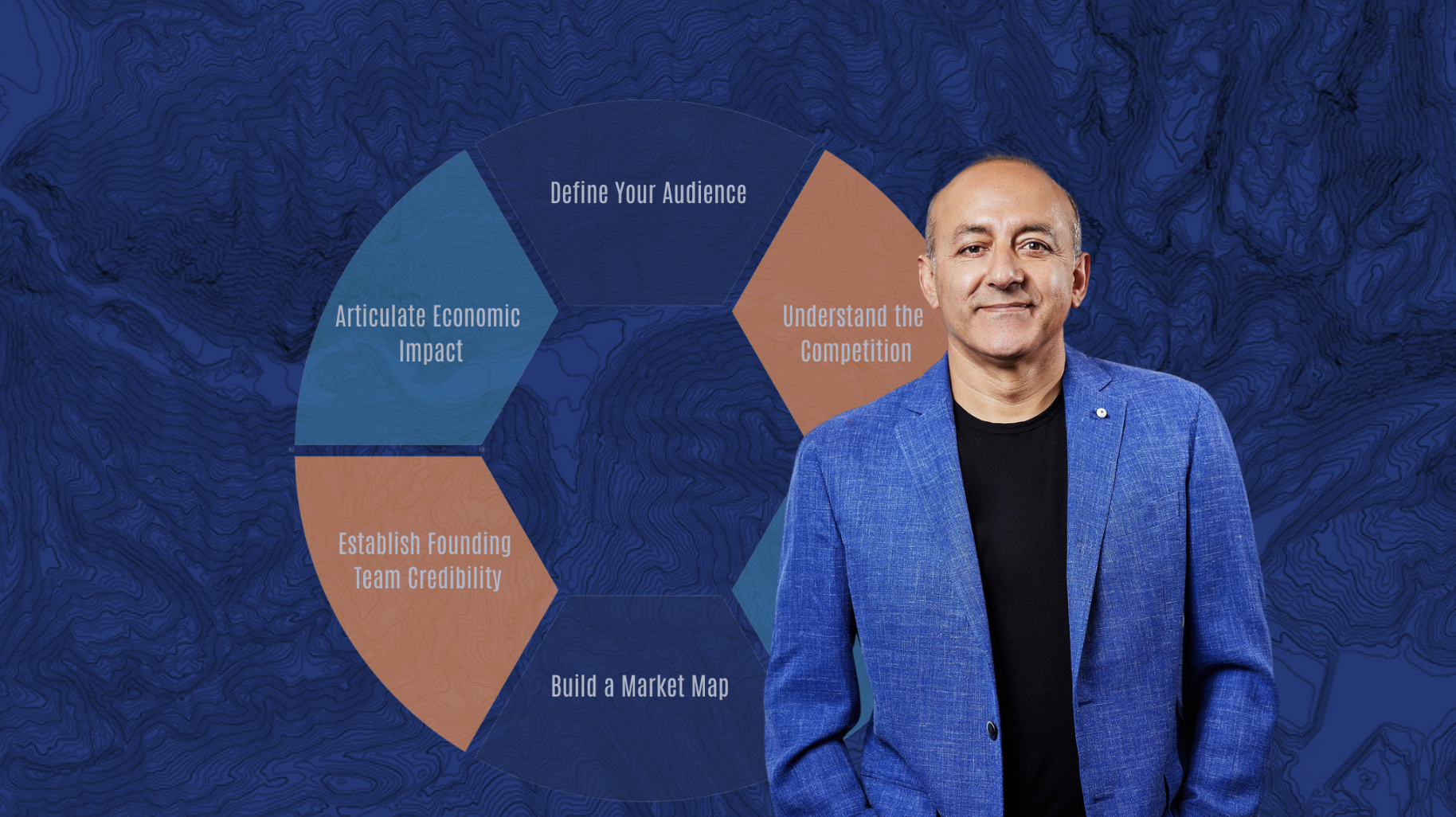Design, Develop, and Deploy: Building Your First Startup Website

As the saying goes, “You only get one chance to make a great first impression.” And in a busy place like the worldwide web, making a positive impact can be make-or-break for a startup looking to define its spot in the market.
We believe a well-designed, functional website is the cornerstone of a startup's online presence. It serves as a virtual storefront, represents your brand, and interacts with potential customers from around the world 24/7.
This comprehensive guide explores the important role that a great website plays for startups and provides a step-by-step methodology for how your team can design, develop, and deploy a site that attracts customers, builds credibility, and drives conversions. From setting measurable goals and creating sketches of your vision to building, testing, and maintaining a user-focused site with the right visual touches, we’ll explore all the steps along the journey to a winning website.
Defining Goals: Laying a Foundation for Sustainable Success
Before starting the design and development process, it's crucial to define the website's purpose and goals. Whether the website showcases products, offers services, or shares information, you must have a crystal-clear understanding of its objectives.
Agreement and clarity around purpose and goals lay the foundation for the entire project.
Understanding the Target Audience
Understanding the site's target audience is Woven into the process of defining goals for your website. Through market research and the development of user personas, startups can create a website that:
- Demonstrates an understanding of your audience's expectations and needs
- Addresses pain points and provides value while building credibility
- Drives visitors to take action to move them further through the sales funnel
Planning and Research: Finding and Thriving in Your Niche
What does it mean to have a successful website? The answer is going to be different for every business and organization, so it’s important to know what your definition of success is and how it connects to your operations.
Understanding what a successful website is requires a solid strategy, which begins with thorough market research and competitor analysis.
By understanding the industry's nuances and closely examining competitors to determine what is working and what isn’t, startups can pinpoint unique selling points, avoid costly mistakes, and amplify opportunities for differentiation.
Turning Research into a Website Strategy
Armed with your overarching goals, target personas, and market research, you can begin to craft a comprehensive website strategy that aligns with your overall business goals. This involves:
- Defining objectives and key performance indicators (KPIs) to guide the development process and measure success once the site is live
- Specifying key website features and functions and overlaying them with your brand identity, messaging, and overall aesthetic
- Mapping user journeys so every visitor interaction is optimized and ties in with your goals
- Creating a comprehensive website strategy lays the groundwork for a website that aligns with your startup’s initial objectives and gives it the space to be agile and poised for future growth.
Getting Granular with Tailored User Experience Design
After defining goals and objectives from your and your personas’ perspectives, it’s time to think about the digital journey visitors will have on your website. That’s where getting familiar with user experience (UX) comes in, ensuring that a website not only captures the attention of visitors but also provides a seamless and enjoyable interaction.
In other words, UX helps your team turn a user's needs and preferences into a digital construct, which involves:
- Creating intuitive and visually appealing website layouts
- Balancing
- White space with content, navigation menus, and the placement of call-to-action buttons
- Ensuring a seamless experience across various devices, including mobile
Ultimately, UX design goes beyond aesthetics; it is a holistic approach that combines user-centric principles, intuitive layouts, and responsive design to create a website that not only looks great but also helps your visitors intuitively follow the journey you have planned for them.
Creating an Engaging Visual Design
While UX is a way of creating the digital paths you want your visitors to enjoy, the visual design adds the (literal and figurative) color they’ll enjoy along the way.
Here, the emphasis is on being purposeful with the selection of key elements that will carry through the entire site to create a cohesive and visually appealing look.
This includes:
- Choosing a color palette that matches the tone you want to set for the site
- Selecting typography that communicates the brand voice
- Picking imagery that subtly evokes emotions that tie in with your voice and tone
Equally important is maintaining consistency in branding across the website. Consistency ensures that visual elements align with the established brand identity, which helps reinforce brand recognition, build trust, and create a strong and memorable brand experience.
Drawing Visitors in with Content That Resonates
With your site's structural and visual framework in place, it’s time to focus on creating content that resonates with visitors, adds value, and effectively communicates the brand message.
More simply, when creating content for your website, think of it like telling a really good story: The words on your site should grab people's attention and encourage them to stick around and explore more.
Woven into this art, however, is some science. Researching ranking keywords that align with your brand messaging and your target audience’s needs enhances organic search visibility over time and ensures the website ranks accordingly, helping more visitors find it.
Similarly, it’s important to diversify the types of content your site offers, selecting formats that match your personas’ preferences.
These can include:
- E-books and guides
- Articles
- White papers
- Infographics
- Checklists
- Newsletters
- Polls and forums
Together, these different types of content help to engage visitors while demonstrating your brand’s ability to deliver value.
Site Development: Breathing Life into Your Vision
In the development phase, the focus is on turning your design into a functional and dynamic reality.
This involves:
- Selecting the Appropriate Technology Stack
- Conduct a thorough analysis of your website's requirements.
- Consider factors such as the type of content, user interactions, and scalability needs.
Choose a technology stack that aligns with your goals, whether it's a content management system (CMS), a custom build, or a mix.
Collaborating with Developers and Designers
- Hold brainstorming sessions with technical developers to help them understand your vision and goals.
- Ensure open communication channels between developers and designers to bridge the gap between technical feasibility and creative design.
- Allow time for iterative feedback loops to refine the development over time, which helps ensure that the end result aligns with the initial vision.
Ensuring Speed, Security, and Scalability
- Implement strategies for optimized website speed, such as employing efficient coding practices and leveraging content delivery networks (CDNs) to help ease accessibility for a global audience.
- Incorporate security best practices, such as secure coding, encryption, and regular security audits, as well as trusted payment and data collection models if needed.
- Plan for potential scalability by selecting technologies that allow for growth and the ability to adapt to increased user demands.
In other words, development is not just about coding; it's where collaboration between developers, designers, and creatives helps your website come together to build a fast, secure, and scalable digital presence that delivers for your visitors.
Guaranteeing a Seamless User Experience with Site Testing and Optimization
With the site built, copy in place, and design integrated, it’s time to shift focus to the process of stress-testing and refining your website to guarantee a seamless and user-friendly experience. This involves:
Conducting Thorough Testing
- Test your website’s performance, accessibility, and functionality across various devices (e.g., laptops, tablets, and smartphones) and different browsers to ensure a consistent user experience.
- Identify and fix any bugs, glitches, or compatibility issues that may get in the way of a great user experience.
Gathering User Feedback and Making Iterative Improvements
- Consider using sample potential customers’ and users’ input to conduct more realistic testing and collect feedback.
- Use the feedback and insights you gather to make iterative improvements to the website's design, functionality, and overall user experience.
At this stage, it’s important to emphasize that testing and optimization aren’t one-and-done tasks; ongoing optimization based on user feedback can help ensure your website remains user-friendly and engaging as it grows with your business.
Elevating Organic Visibility with Search Engine Optimization
As the countdown to website launch draws closer, now is the time to optimize your website for search engines to enhance organic visibility.
Here are some key search engine optimization (SEO) tips:
- Strategically incorporate relevant keywords that match user search queries into your website's content.
- Craft concise and engaging meta descriptions that draw users in to read more.
- Use meta tags to convey the essence of each page and attract search engine attention.
- Fine-tune headings so they not only are user-friendly but also incorporate targeted keywords for search engine indexing.
- Ensure that URLs are concise, descriptive, and optimized for both users and search engines.
- Add descriptive alt text to images, which helps with user accessibility and search engine indexing.
Taking Flight with Website Deployment
After countless hours of research and hard work, it’s time to tackle a few last steps before hitting the launch button on your website.
- Choose a reliable hosting provider and domain name: Select a hosting provider that aligns with your site’s requirements for speed, support, and reliability.
- Configure DNS settings: Using information from your hosting provider, finalize your site’s domain name system (DNS) settings so global servers know where to find your site.
- Pop the cork and put on your party hats! This is self-explanatory!
Once these steps are complete, launch the site. It’s the moment you’ve been waiting for! This day is always a key milestone in a business’ journey—savor it!
Capturing Data-Driven Insights with Analytics and Tracking
With your site up and running, set up your advanced web analytics tools to track performance and gain insights into the users visiting your site and their behaviors. Key metrics such as overall website traffic, bounce rates, conversion rates, and user demographics can be used to gauge the effectiveness of your digital strategy and design. This initial wave of data can also be used to create a baseline against which future performance and content changes can be measured.
Ultimately, using analytics will help your team better understand how users are navigating your site and engaging with content. You’ll learn more about what is working and what isn’t with the help of quantitative data instead of gut feelings.
Performing Ongoing Maintenance and Updates
Finally, don’t forget about the role of continuous care and feeding in maintaining and enhancing your website. This includes creating purposeful strategies for caring for your site’s content and its performance:
Regularly Review and Update Content
Implement a content creation and review plan to keep information current and engaging for visitors.
Keep the Website Secure
Prioritize website security with regular updates, patches, and best practices to safeguard against potential threats and changes in privacy, payment, and/or data collection regulations.
Monitor Performance
Monitor KPIs to ensure optimal website functionality. Make necessary improvements based on site metrics, performance assessments, and user feedback to help ensure your website is firing on all cylinders.
Learn more about Sierra's partner, Smartbug Media.
Jen Spencer, CEO of SmartBug Media, has more than 20 years of marketing experience working within tech startups, publicly traded companies, mid-market organizations, and the not-for-profit space. She assists B2B organizations and B2C e-commerce businesses drive lead growth, revenue generation, and market awareness throughout the full customer lifecycle, leveraging comprehensive digital content, design, and web development solutions.
Subscribe to our news letter to get latest updates and news
Design, Develop, and Deploy: Building Your First Startup Website
- Summary
Defining Goals: Laying a Foundation for Sustainable Success
Getting Granular with Tailored User Experience Design
Creating an Engaging Visual Design
Drawing Visitors in with Content That Resonates
Guaranteeing a Seamless User Experience with Site Testing and Optimization

.png?width=1224&height=1660&name=2024-02-IG-SB-Sierra%20Ventures-V2%20(1).png)

